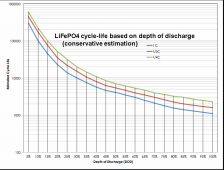Penoffgrid
New Member
- Joined
- Aug 19, 2022
- Messages
- 7
Hello all, this is my first post, I am very new to this, so any advice greatly appreciated!
I bought some land with an off grid PV system already installed by a pro. Unfortunately in ignorance I think we have wrecked the Lead Carbon batteries by allowing them to discharge too low (I thought there would have been some sort of cut off, but apparently not). Now they do not hold charge well and the system can only just about run a light bulb without cutting out. I put the volt meter on each one when a load was turned on and there was a huge drop so I assume they have had it.,.
This is what we currently have, and I would like to replace the batteries with LiFePo4 ones, but I think this may also require a new inverter.
Many thanks indeed for your help
I bought some land with an off grid PV system already installed by a pro. Unfortunately in ignorance I think we have wrecked the Lead Carbon batteries by allowing them to discharge too low (I thought there would have been some sort of cut off, but apparently not). Now they do not hold charge well and the system can only just about run a light bulb without cutting out. I put the volt meter on each one when a load was turned on and there was a huge drop so I assume they have had it.,.
This is what we currently have, and I would like to replace the batteries with LiFePo4 ones, but I think this may also require a new inverter.
- 6 x LG Neon 2 (giving a total of 2010watts or 2.01kw maximum power.
- 1 x 5kw combi inverter (IC2 -KMS)
- 4 x 170ah 12v lead carbon batteries
Many thanks indeed for your help




